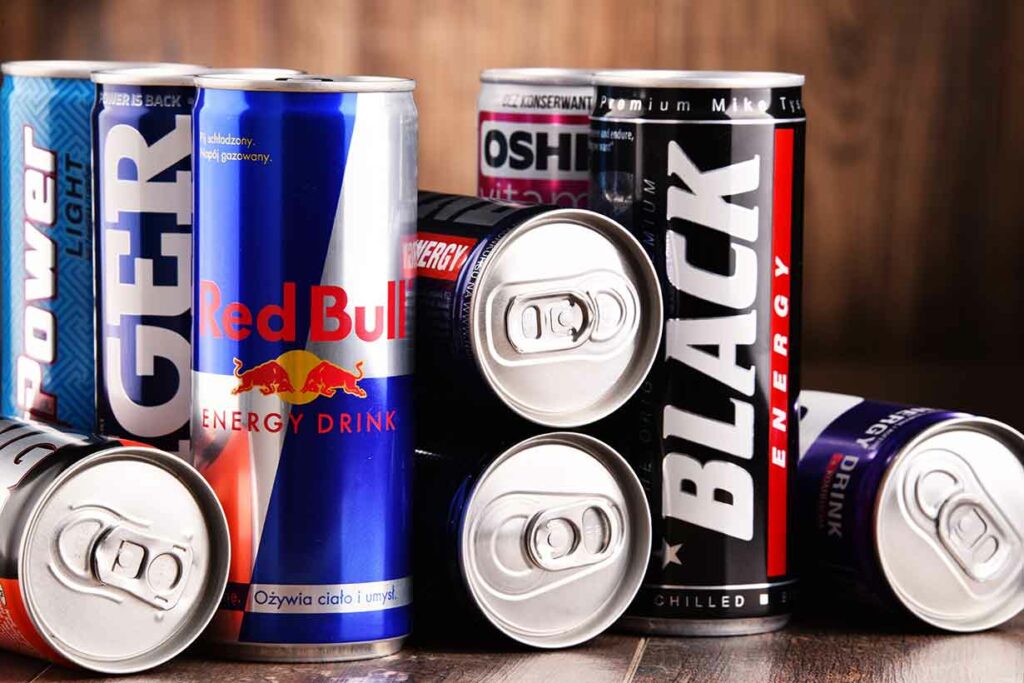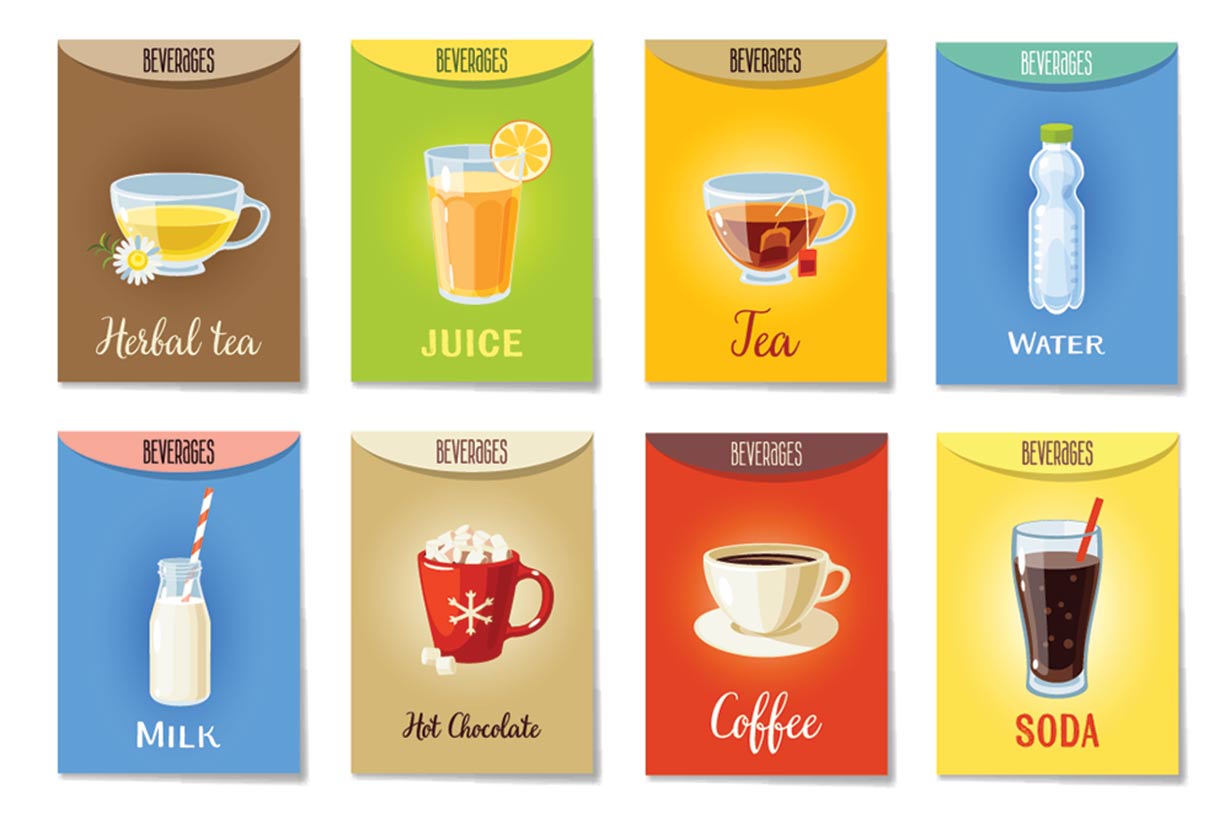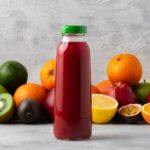Are Energy Drinks Dangerous?
The popularity of energy drinks has increased a lot in recent years, particularly among teenagers and younger adults.
Furthermore, we can see a constant stream of stories in the media about energy drinks, and most of this news is negative.
The question is: despite being a trendy type of drink, are energy drinks really dangerous?
This article investigates the issue, examines the ingredients in energy drinks, case studies, and what the data from scientific research shows.

Table of contents
- What Are Energy Drinks?
- Energy Drinks In the News
- How Much Caffeine Is In Energy Drinks?
- How Much Caffeine Per Day Is Safe?
- What Ingredients Do Energy Drinks Contain?
- Are Hospitalizations From Energy Drink Intake Common?
- When Are Energy Drinks Potentially Dangerous?
- Human Trials Involving Energy Drinks
- Over-consumption of Energy Drinks Is Problematic
- Are Energy Drinks Dangerous?
What Are Energy Drinks?
First of all, let’s define what an energy drink is.
Despite their caffeine content, drinks such as coffee, tea, and cola are not typically considered ‘energy drinks.’
Generally speaking, the producers of energy drinks market the products for the energy they provide to boost physical or mental performance. In this regard, the words ‘energy’ and ‘caffeine’ are usually prominent on the packaging of these products.
Most energy drinks include caffeine and sugar or sweeteners, carbonated water, and various flavorings. Additionally, there are many available flavors, and the packaging of energy drinks is usually quite colorful.
People use energy drinks for focus, energy before exercise, or just for taste preference. The drinks are trendy among young people.
Some of the most famous brands of energy drinks include Bang, Monster, Red Bull, and Rockstar.
Energy Drinks In the News
It is easy to see articles and videos in the news about the effects of energy drinks.
For example, here are some recent headlines on the issue:
- A 21-year old man who drank 4 energy drinks a day was hospitalized with heart and kidney failure (Yahoo News)
- Monster energy drink cited in deaths (New York Times):
- More than 10 percent of emergency room visits involving energy drinks result in hospitalization (Washington Post)
- Student’s Heart Failure Linked to ‘excessive’ energy drinks (BBC News)
- More emergency room visits linked to energy drinks (New York Times)
- Caffeine overdose killed South Carolina teen, coroner rules (NBC News)
These headlines represent just a small selection of the stories on the topic.
However, it is important to note that millions of people consume energy drinks without incident.
Is it a case of ‘the dose makes the poison,’ as with many different foods and medicines that can potentially be “bad” for us?
One of the questions we should look at is how much caffeine is in energy drinks, and at what intake level are they potentially dangerous?
How Much Caffeine Is In Energy Drinks?
The amount of caffeine in energy drinks can significantly vary from brand to brand.
However, the following table shows the caffeine content of some of the most popular energy drink varieties.
The source for this data is the official website of each energy drink brand/producer (1, 2, 3, 4, 5, 6).Energy drink name Typical size as sold Caffeine content as sold Caffeine content per liter Caffeine content per fluid ounce Bang Energy 473 ml (U.S.)
500 ml (U.K.)300 mg (U.S.)
200 mg (U.K.)634 mg (U.S.)
400 mg (U.K.)18.75 mg (U.S.)
12.5 mg (U.K.)Monster Energy 473 ml (US)
500 ml (UK)160 mg 338 mg (US)
320 mg (UK)9.99 mg (US)
9.46 mg (UK)Red Bull 250 ml 80 mg 320 mg 9.52 mg Rockstar Energy (original) 473 ml (U.S.)
500 ml (U.K.)160 mg 338 mg (U.S.)
320 mg (U.K.)9.99 mg (U.S.)
9.46 mg (U.K.)
As the table shows, a popular energy drink can contain as much as 300 mg of caffeine (Bang Energy, U.S.).
How do these amounts of caffeine compare to other caffeinated drinks?
Based on a study published in the Journal of the American Dietetic Association, here is the average caffeine content of black tea and brewed coffee (7):
- Black tea: 28-46 mg
- Brewed coffee: 107-151 mg
Additionally, a study published in the Journal of Analytical Toxicology demonstrated that the caffeine content of carbonated soda drinks ranged from 0 mg to 48.2 mg per serving (8).
Based on these data, a can of Bang Energy containing 300 mg caffeine would be equivalent to:
- 6-10 cups of black tea
- 2-3 cups of brewed coffee
- 6+ servings of carbonated soda
This comparison shows how easy it is to consume significant amounts of caffeine if consuming multiple energy drinks daily.
For further information, see this comprehensive guide to the caffeine content of popular drinks for the caffeine levels of 300+ beverages.
How Much Caffeine Per Day Is Safe?
According to the U.S. Food and Drug Administration (FDA), up to 400 mg of caffeine daily is considered safe for healthy adults (9).
The European Food Safety Administration (EFSA), known for their stringency, also state that “Habitual caffeine consumption up to 400 mg per day does not give rise to safety concerns for non-pregnant adults. Habitual caffeine consumption up to 200 mg per day by pregnant women does not give rise to safety concerns for the fetus” (10).
400 mg of caffeine is equivalent to 2.5 cans of Monster Energy (assuming no other caffeine sources throughout the day).
However, it only takes one can and a third of the U.S. version of Bang Energy to hit the 400 mg recommended limit.
How much caffeine per day do energy drink users typically consume?
Do energy drink users consume higher-than-recommended amounts of caffeine?
We can look to a recent large study that investigated caffeine intake levels amongst energy drink users to answer this question.
The American Journal of Preventive Medicine published this study, which examined ‘Trends in Energy Drink Consumption Among U.S. Adolescents and Adults, 2003-2016’. This study featured 33,259 adults, providing a significant sample size.
Overall, the researchers determined that “energy drink consumers had significantly higher total caffeine intake compared with non-consumers for adolescents (227.0 mg vs. 52.1 mg), young adults (278.7 mg vs. 135.3 mg), and middle-aged adults (348.8 mg vs. 219.0 mg) (11).
Thus, it is clear that energy drink users have a higher mean caffeine intake than non-users.
However, energy drink users’ mean caffeine intake levels are still within the 400 mg per day safety recommendation.
What Ingredients Do Energy Drinks Contain?
Most media attention on energy drinks relates to their high caffeine content.
However, what other ingredients do these drinks contain?
Common ingredients used in energy drinks include (12):
- B vitamins: B vitamins play a role in energy metabolism.
- Caffeine: a stimulant found in various plant foods.
- Colors: as found in many other soft drinks and candy products.
- Ginkgo biloba: an extract from the ginkgo tree that may help improve blood flow (13).
- Ginseng: a plant root extract with a somewhat bitter taste. A 2018 systematic review of randomized controlled trials found that ginseng may have value for lowering fatigue, but that further research is necessary (14).
- Glucoronolactone: a synthetic lab-produced chemical that the human body can also produce via the metabolism of glucose in the liver. It is purported to help provide energy, but there does not appear to be any strong evidence from human trials to support this.
- Guarana: an extract from seeds of the guarana (Paullinia cupana) plant. Among the various plant compounds it contains, guarana is a natural source of caffeine.
- L-Carnitine: a type of amino acid that plays a role in energy production.
- Natural flavors: food flavorings commonly used in branded food and drinks.
- Sugar/artificial sweeteners: ‘zero’ or sugar-free products typically contain aspartame, acesulfame potassium, and/or sucralose.
- Taurine: a sulfur-containing essential amino acid. A 2021 systematic review on taurine demonstrated that taurine supplementation may have benefits for strength and aerobic exercise performance (15).
Research has shown that each ingredient is generally safe in amounts used per serving.
However, there has been little research on the potential combined effect of these ingredients, which will hopefully change in the future.
Are Hospitalizations From Energy Drink Intake Common?
According to the 2013 DAWN report, published by the Substance Abuse and Mental Health Services Administration (16):
- There were 20,783 energy drink-related emergency department visits in 2011.
- Of these hospitalizations, 12,131 were due to ‘energy drinks only’ while 8652 were due to ‘energy drinks in combination’ with various legal, illegal, or pharmaceutical drugs.
- Most patients admitted to hospital were in the 18-39 age group.
- There were more male patients (14,905) than female patients in 2011 (5,878) – approximately 2.5 males to 1 female.
- In the year 2011, 14,042 energy drink-related emergency departmnt visits were due to adverse reactions. However, only 6090 were recorded as due to clear misuse or abuse. This suggests that perhaps some hospitalizations might be due to existing health issues combined with energy drinks.
From this data, we can ascertain that 12,131 hospitalizations in 2011 were due to energy drinks.
However, the report didn’t confirm how many of these cases were seen in otherwise healthy adults without underlying conditions.
For example, lower doses of caffeine can be more of a concern for individuals with underlying (possibly undetected) cardiovascular issues (17, 18).
When Are Energy Drinks Potentially Dangerous?
Two of the most important factors when considering the potential dangers of energy drinks include:
- Use versus misuse: consuming multiple servings of energy drinks can result in potentially dangerous levels of caffeine intake.
- Underlying issues: energy drinks may be problematic for people with underlying cardiovascular issues.
As mentioned previously, many hospital visits related to energy drinks are due to a high intake of these drinks.
Additionally, underlying conditions seem to be a relatively common occurrence.
Case Studies
For example, here are some of the particulars from case studies of individuals seeking medical attention for energy drink-related cardiovascular abnormalities:
- A 25-year old female with pre-existing mitral valve collapse died after consuming a single, highly-caffeinated 55-ml ‘energy blast’ drink. This drink (‘Race 2005 Energy Blast’) is now discontinued, and was marketed as having 12 mg of caffeine per ml. Subsequent tests showed it contained 19 mg per ml, which would be over a gram of caffeine per drink (19, 20).
- After consuming six cans of Red Bull, a 27-year old male with a history of premature ventricular complexes had a heart attack (21).
- A 34-year old male was admitted to hospital with tachycardia (rapid heartbeat) after consuming two boxes of Red Bull (22).
- A 26-year old patient had a ST-elevation myocardial infarction – a heart attack due to complete (in this case) artery blockage. He had been consuming 8-10 cans of energy drinks on a daily basis (23).
- Following 3-4 cans of Red Bull and 2-3 cans of Monster Energy, a 17-year old male sought medical attention for angina. He had elevated cardiac enzymes and an abnormal electrocardiogram. It was determined that this had been caused by coronary vasospasms, which had put him at risk of heart attack (24).
The takeaway points we can make from these case studies are:
- It is important to stick to the recommended serving size of energy drinks, and ideally stick to the 400 mg ‘recognized as safe for healthy adults’ caffeine limit as advised by the FDA and EFSA (9, 10).
- People with pre-existing cardiac conditions should be especially careful and discuss energy drink usage with their medical team.
Human Trials Involving Energy Drinks
Here is a summary of some recent findings from human trials investigating more typical energy drink intake:
- A 2021 systematic review included 32 human clinical studies. Among these trials, common adverse effects observed included insomnia, jitteriness, gastrointestinal upset. The authors recommended avoidance of consuming energy drinks frequently and called for stricter controls of sale, particularly for young people (25).
- A 2017 randomized controlled trial involving 18 healthy adults gave one group an energy drink containing 320 mg caffeine and a placebo group a control drink containing 320 mg of caffeine. Compared to caffeine alone, the energy drink led to significantly higher systolic blood pressure at 6 hours (4.72 mm Hg vs 0.83 mm Hg) (26).
- In a 2019 randomized, crossover trial involving 38 adults, the cardiovascular and metabolic effects of 750 ml and 1000 ml of commercial energy drinks were analyzed. The study found that these energy drink doses had a slight adverse effect on blood pressure and heart rate one hour after administration (27).
It Is Important To Interpret These Results With Care
As we can see, energy drinks can cause some adverse effects. However, it is crucial to put these results into the proper context.
Most energy drinks provide an amount of caffeine between 80 to 200 mg. On this note, an Americano coffee from Starbucks provides 75mg to 300 mg caffeine, depending on the cup size (28).
This comparison is important because human trials have shown that the administration of coffee can also lead to similar short-term increases in blood pressure and heart rate (29).
Interestingly, though, habitual intake of coffee does not appear to have these same blood-pressure-increasing effects.
For example, a 2015 randomized controlled trial on the short-term effects of espresso on heart rate variability and blood pressure deserves mention. This study involved 38 habitual coffee consumers and 39 non-habitual coffee consumers.
The study results found that systolic blood pressure only rose in non-habitual coffee drinkers and not in individuals who were habitual coffee consumers. In addition, heart rate variability was significantly lower in habitual coffee consumers compared to non-habitual consumers after drinking espresso (30).
Thus, could some of the effects from studies showing adverse reactions from energy drinks be due to non-habitual use of caffeine? Unfortunately, this is difficult to determine from many of the existing studies.
Habitual Use vs. Non-Habitual Use
Notably, one recent (2021) study conducted a trial on energy drinks that did differentiate between habitual and non-habitual caffeine users (31).
Published in the Clinical Nutrition ESPEN journal, the trial involved 48 students from Adnan Menderes University. The participants were split into four groups: a control group and three groups based on their habitual caffeine intake (low, medium, high).
The researchers then took the participants’ blood pressure and heart rate readings one hour after they consumed a 473-ml can of Red Bull.
Interestingly, on average, systolic blood pressure, diastolic blood pressure, and heart rate all significantly increased after one hour.
However, these measures did not alter in the high-habitual caffeine consumers group, who had a mean intake of 449 mg caffeine per day.
This study suggests that energy drinks may have more of an effect on blood pressure and heart rate in individuals who are non-habitual caffeine users, similar to the research on coffee.
As for future research, the researchers behind the study plan to undertake further studies with different energy drinks and varying caffeine doses to provide more clarity.
Over-consumption of Energy Drinks Is Problematic
It is unlikely that the sensible use of energy drinks (i.e., one can of Monster Energy) will cause issues for otherwise healthy adults.
However, numerous case studies are showing that a high intake of energy drinks, particularly over a sustained time period, can cause problems (32).
Some of this excessive intake may be due to young people not recognizing the dangers of too much caffeine.
How Do Young People Perceive Energy Drinks?
A 2017 United Kingdom-based qualitative study analyzed children and young people’s perception of energy drinks. Here are some of the statements gathered from children aged between 10 and 14 years old (33):
- “Everybody only drinks them for their taste.”
- “If you want to be woken up, you drink the big ones.”
- “We get a big bottle and share it.”
- “They’re only cheap.“
- “If you’re playing on your tablet or something and you’re playing a game, an advert pops up for Relentless.” (name of an energy drink)
- “Say your friend, he has something that looks really, really nice – an energy drink, like a Monster – but you only have a bottle of water. You’re tempted to get that because it looks cooler and what your friends have you want, so you don’t want to be left behind.”
- “Some parents don’t allow people to drink energy drinks, so they just drink them when they’re out.“
From these responses, we can see that energy drinks appeal to children and young people.
According to the survey responses: the price point, marketing, and taste all contribute to the desirable traits of energy drinks for this age group.
In their concluding comments, the researchers behind this qualitative study remarked: “These findings provide support for policy-level interventions that seek to change the behaviors of manufacturers and retailers as well as consumers, and actively involve children and young people as far as possible” (33).
It is also likely that energy drinks are easier to over-consume for young people due to their accessibility.
Although coffee shop drinks such as espresso, Americano, and latte can contain more caffeine per serving, they are significantly more expensive.
Thus, young people are more likely to drink multiple energy drinks for affordability reasons.
Energy Drink Use Is Prevalent Among Young People
A 2015 United States-based cross-sectional study looked at the usage and perception of energy drinks among 779 youths aged 12 to 17 years old (34).
Among its findings, this study determined that:
- 9% of respondents consumed energy drinks
- 19.5% of respondents felt energy drinks are safe for teenagers
Additionally, an earlier 2011 study on the health effects of energy drinks on children and young adults noted that (35):
- Approximately 30-50% of teenagers and young adults combined consume energy drinks.
- Among 5448 caffeine overdoses in the United States during 2007, 46% occured in people under the age of 19.
As younger age groups widely consume energy drinks, it is vital to ensure that energy drink users know the potential adverse effects of over-consumption.
Are Energy Drinks Dangerous?
Overall, from looking at the existing research, it is clear that energy drinks have the potential to be dangerous.
However, a significant proportion of the adverse results are related to excessive intake, thus excess caffeine consumption.
When used in recommended amounts, there is no conclusive evidence at this point to suggest that energy drinks are uniquely dangerous.






